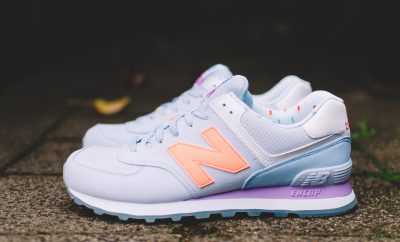
Blogs
Is There A Legal Way to Offer Fast Fashion to the Masses?
I’m just going to cut to the chase: I hate Forever 21. Don’t get me wrong, I spent plenty of my parents’ money there on a seasonal basis when I was a teen, but by the time I was 17 I had completely sworn off the fast fashion mega-chain. Ironically, I used to shop at stores like Forever 21 and H&M because their merchandise was strikingly similar to the clothes I would see in magazines. But the more I immersed myself in the industry, the more I learned that these stores were the antithesis to the look I was striving to emulate. Forever 21 blatantly copies designers’ prints from big names like Diane von Furstenberg to independent clothing boutiques. In publishing that’s called plagiarism, but in retail it’s called making fashion “accessible” to the masses.

Courtesy of Simka sol via Facebook
The whole concept behind Forever 21 disturbs me. I used to walk into a store in complete awe, wondering how I was ever going to manage to thoroughly browse through all of the trendy merchandise. Now I walk in and feel disgusted.
I first noticed something was off about the store when I visited a three-level unit at the Garden State Plaza, much larger than any other store I had seen before. The bottom floor was overstuffed with sale merchandise. Upon seeing this I immediately thought, “What do they end up doing with all of these clothes? Surely, not that many people end up buying sale when there’s so much on-trend and reasonably-priced merchandise upstairs.” I pictured those factories where they shred old clothes and realized that even if the store never sells most of its sale merchandise, it will hardly make a dent in the company’s revenue. Forever 21’s clothes could cost around 20 cents to make and they sell them for $20 apiece, that’s a 1,000 percent markup. Something about that just doesn’t seem right.
Copyright laws allow for retailers like Forever 21 to copy garment designs, but not any prints that designers place on their garments. Which, if you think about it makes a lot of sense. Most clothes are made with one of a few possible patterns and ultimately it is what a designer puts of those patterns that makes their work unique and innovative. Considering part of their job description involves designing prints, how is it fair for them to do all the work only for someone else to come along and sell the same thing at a fraction of the price? Not to mention that fast fashion retailers can make a whole lot more money off of a copyrighted item by selling it in mass quantities.

Left: A dress by Diane von Furstenberg Right: Forever 21’s version. Courtesy of Susan Scafidi via Counterfeit Chic
Granted, the role of a fashion designer is also to set the example so other fashion retailers can sell on-trend clothing to the masses. However, trends usually dictate a silhouette or color that is “of the moment.” Sometimes a particular generic print may be in style, for example leopard print, but in that case there are so many variations that retailers can make that it is completely unnecessary for them to literally copy a designer’s version of that print. So why does Forever21 win or settle nearly every lawsuit filed against it?
In addition to over 50 copyright lawsuits, the company is also notorious for numerous labor violations. So not only does it cheat designers out of profits, but it also fails to pay employees fairly. Employee lawsuits go as far back as 2001, when workers claimed they were being paid under minimum wage. There was even a three-year boycott of the retailer by its U.S. garment workers. This year, U.S. Department of Labor’s Occupational Safety and Health Administration (OSHA) fined three stores with over $100,000 in safety violations.
Despite all of the company’s lawsuits and violations, Forever 21 is one of the largest clothing retailers in the world, so independent designers and small design firms often do not stand a chance against it. Also, Forever 21 has a history of settling before cases are ever brought to trial. Susan Scafidi, fashion law professor at Fordham University, explains that “they’ve been caught so many times, they’ve been publicly exposed so many times, they’ve even been sued — although many fewer times, because all they do is settle — this is just part of their business strategy. They go ahead and they take what they want, and when they get caught, they pay up. It’s probably cheaper than licensing it in the first place.”
The way Forever 21 runs its business is unnecessary as there are plenty of other retailers who run honest businesses, while still offering on-trend merchandise. Despite their involvement in the Bangladeshi factory collapse last year, Gap is a respected retailer in the industry and often collaborates with high-end designers and the Council of Fashion Designers of America (CFDA) in order to provide designer fashions to the masses. In fact, the recent explosion of designer collaborations with retail chains like Target, J. C. Penney, and H&M is the perfect antidote to the moral fast fashion dilemma. When designers willingly and legally offer their pieces to retailers, then there is no need to copy their designs because consumers can have access to the real thing at their desired price-level.
High-end designers control trends in this industry, but large chain retailers control how these trends get delivered to about 90 percent of consumers. Stricter copyright laws should be implemented in order to protect the artistic integrity of these designers. The garment industry is just like any other creative industry, so if it’s illegal to copy famous works of art, it should be illegal to copy wearable works of art as well.
—
Katherine Fabian (@kafernn) is a recent graduate of Fordham University’s College at Lincoln Center and is currently applying to law schools, freelance writing, and teaching yoga. She hopes to one day practice fashion law and defend the intellectual property rights of designers.
Featured imaged courtesy of [Adam Fagen via Flickr]








Comments